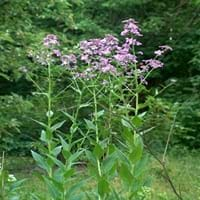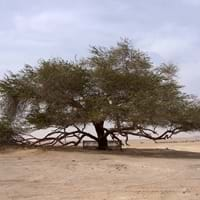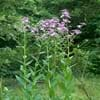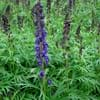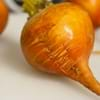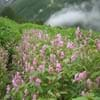Life Span
Biennial
Perennial
Origin
Southern Europe, Western Europe, Russia/Siberia, Central Asia, Western Asia
Southwestern United States
Types
Summer lilac, Winter gilliflower
Prosopis chilensis, Prosopis juliflora
Number of Varieties
Not Available
Habitat
meadows, Open areas, Roadsides, Woodlands
Desert, Dry areas
USDA Hardiness Zone
4-9
6-9
Sunset Zone
21,22
Not Available
Habit
Clump-Forming
Arching/Fountain-shaped
Flower Color
White, Pink, Lavender
Yellow
Flower Color Modifier
Bicolor
Bicolor
Fruit Color
Not Available
Tan
Leaf Color in Spring
Green, Dark Green
Blue Green
Leaf Color in Summer
Green, Dark Green
Blue Green
Leaf Color in Fall
Green, Dark Green
Blue Green
Leaf Color in Winter
Light Green
Not Available
Leaf Shape
Ovate
Compound
Plant Season
Spring, Summer
Spring
Sunlight
Full Sun, Partial Sun
Full Sun
Type of Soil
Clay, Loam, Sand
Clay, Loam, Sand
The pH of Soil
Neutral, Alkaline
Acidic, Neutral, Alkaline
Soil Drainage
Well drained
Well drained
Bloom Time
Late Spring, Early Summer, Summer
Spring
Tolerances
Not Available
Drought, Salt
Where to Plant?
Container, Ground
Ground
How to Plant?
Seedlings, Stem Planting, Transplanting
Grafting, Seedlings
Plant Maintenance
Medium
Medium
Watering Requirements
Average Water Needs, Water when top layer of soil becomes dry
Keep ground moist
In Summer
Lots of watering
Ample Water
In Spring
Moderate
Moderate
In Winter
Average Water
Ample Water
Soil pH
Neutral, Alkaline
Acidic, Neutral, Alkaline
Soil Type
Clay, Loam, Sand
Clay, Loam, Sand
Soil Drainage Capacity
Well drained
Well drained
Sun Exposure
Full Sun, Partial Sun
Full Sun
Pruning
Remove damaged leaves, Remove dead branches, Remove dead leaves
Prune in early spring, Remove all watersprouts, Remove dead leaves
Fertilizers
All-Purpose Liquid Fertilizer
Use nitrogen rich soil
Pests and Diseases
Red blotch
Armored scales, Candidula scale, Flatheaded borers, Mealybugs, Mesquite girdler, Mesquite scale, Oldman longhorn, Roundheaded borers, Stem gall rust
Plant Tolerance
Drought
Drought, Salt
Flower Petal Number
Single
Not Available
Fragrant Bark/Stem
No
Yes
Foliage Texture
Medium
Fine
Foliage Sheen
Matte
Matte
Invasive
Sometimes
Sometimes
Attracts
Bees, Butterflies, Hummingbirds, Insects
Birds
Allergy
Vomiting
Asthma, Rhinitis
Aesthetic Uses
Bouquets, Landscape Designing, Showy Purposes
Not Used For Aesthetic Purpose
Beauty Benefits
Not Available
Improve hair condition
Environmental Uses
Air purification
Air purification
Medicinal Uses
Nutrients
Conjuctivitis, Emetic, Eye Problems, Headache, Laxative, Pain in gums, Stomach aliments, Sunburn
Part of Plant Used
Flowers, Leaves, Seeds
Inner Bark, Leaves, Sap
Other Uses
Showy Purposes, Used As Food, Used as Ornamental plant
Used as a dye, Used As Food, Used for its medicinal properties, Wood is used for making furniture
Used As Indoor Plant
Yes
No
Used As Outdoor Plant
Yes
Yes
Garden Design
Cutflower, Mixed Border, Wildflower
Shade Trees, Street Trees
Botanical Name
HESPERIS matronalis
PROSOPIS glandulosa
Common Name
Dame's Rocket, Sweet Rocket
Mesquite
In Hindi
डेम के रॉकेट
उत्तर पश्चिमी अमरीका का एक फलीदार पेड
In German
Rockets Freifrau
Mesquite
In French
Rocket Dame
Mesquite
In Spanish
Rocket Dame
mezquite
In Greek
Rocket Dame του
Είδος μιμόζας
In Portuguese
Rocket de Dame
Mesquite
In Polish
Rocket Dame
Mesquite
In Latin
Hesperis Rocket
Mesquite
Phylum
Magnoliophyta
Magnoliophyta
Class
Magnoliopsida
Magnoliopsida
Order
Brassicales
Fabales
Family
Brassicaceae
Fabaceae
Clade
Angiosperms, Asterids, Eudicots
Angiosperms, Eudicots, Rosids
Tribe
Hylocereeae
Not Available
Subfamily
Cactoideae
Not Available
Number of Species
Not Available
Not Available
Importance of Dame's Rocket and Mesquite Tree
Want to have the most appropriate plant for your garden? You might want to know the importance of Dame's Rocket and Mesquite Tree. Basically, these two plants vary in many aspects. Compare Dame's Rocket and Mesquite Tree as they differ in many characteristics such as their life, care, benefits, facts, etc. Every gardener must at least have the slightest clue about the plants he wants to plant in his garden. Compare their benefits, which differ in many ways like facts and uses. The medicinal use of Dame's Rocket is Nutrients whereas of Mesquite Tree is Conjuctivitis, Emetic, Eye Problems, Headache, Laxative, Pain in gums, Stomach aliments and Sunburn. Dame's Rocket has beauty benefits as follows: Not Available while Mesquite Tree has beauty benefits as follows: Not Available.
Compare Facts of Dame's Rocket vs Mesquite Tree
How to choose the best garden plant for your garden depending upon its facts? Here garden plant comparison will help you to solve this query. Compare the facts of Dame's Rocket vs Mesquite Tree and know which one to choose. As garden plants have benefits and other uses, allergy is also a major drawback of plants for some people. Allergic reactions of Dame's Rocket are Vomiting whereas of Mesquite Tree have Asthma and Rhinitis respectively. Having a fruit bearing plant in your garden can be a plus point of your garden. Dame's Rocket has no showy fruits and Mesquite Tree has showy fruits. Also Dame's Rocket is not flowering and Mesquite Tree is not flowering . You can compare Dame's Rocket and Mesquite Tree facts and facts of other plants too.
